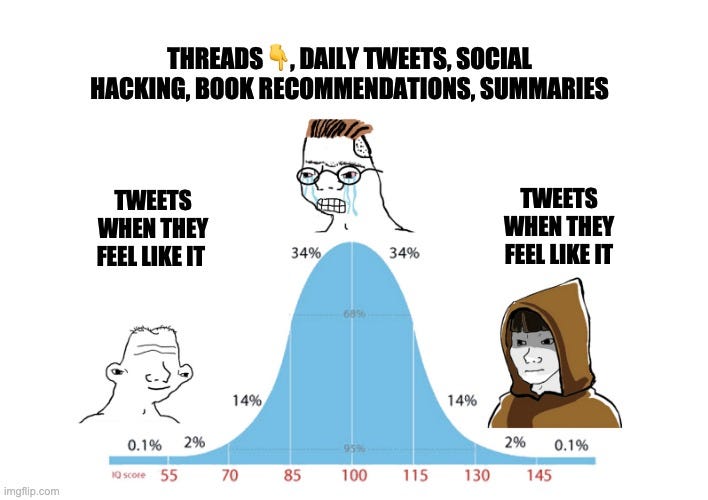What the Bell Curve Memes Obscure
Not only are they distasteful and in some cases grotesque—they paint a lifeless picture of human possibility.
“Nothing can seem extraordinary until you have discovered what is ordinary.” —C.S. Lewis
The image above is one of thousands of variations of the “IQ distribution” bell curve meme, which have become popular online in the past few years to poke fun at “midwits” (people falling within one standard deviation of the mean)—and to make various observations about the ‘horseshoe’ phenomenon, in which people at opposite ends of the spectrum come to the same conclusions for entirely different reasons. (Take, for example, the idea that people on the extreme left and right of the above distribution might say “I believe in God”, but perhaps with very different justifications.)
These memes have also been used to drive discourse around what is “normie” (what falls in that middle band or two) and what is not. There has been a strange fixation on what is cool or uncool, what is normal and not normal—especially for esoteric knowledge that “few” understand, which I think probably speaks to the general gnostic turn that our society seems to have taken. A divinity doesn’t exist that can save you; but you can at least save yourself from the fate of the masses.
I find the IQ version of the bell curve meme to be distasteful and offensive—and not only because many variations of it originated in subcultures (for instance, on 4chan) where racism and disparagement of others is common, but also because they represent a scientific and deterministic worldview that is becoming very normalized. And if the meme represents what people actually think (and I think it goes), then this is a worldview that is lacking a vertical axis whereby people change according to principles that are not biologically or socially determined.




